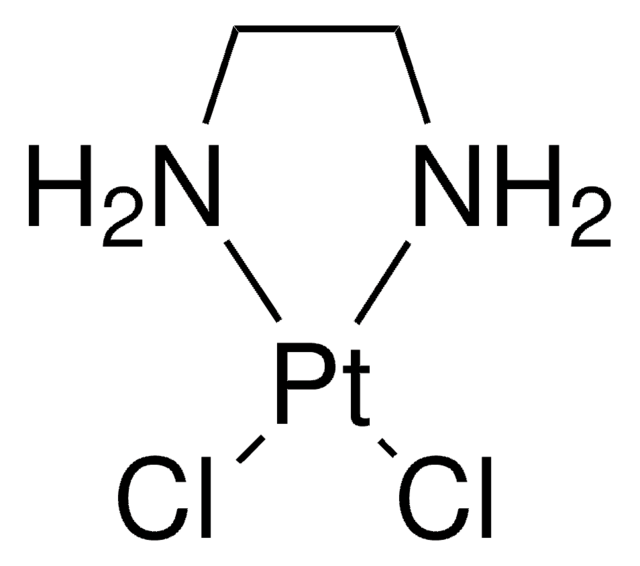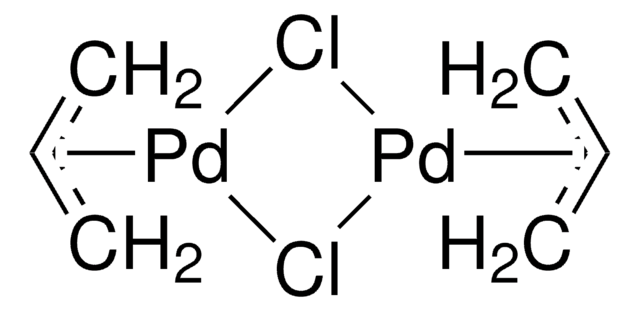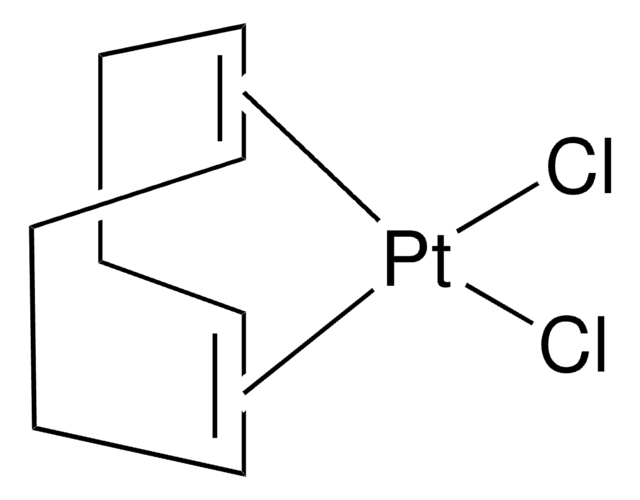223689
Bis(benzonitrile)palladium(II) chloride
95%
Sinónimos:
Benzonitrile, palladium complex, Bis(benzonitrile)dichloropalladium(II), Bis(benzonitrile)palladium(II) chloride, Bis(phenylnitrile)dichloropalladium, Dibenzonitrilepalladium dichloride, Dichlorobis(benzonitrile)palladium, Dichlorobis(benzonitrile)palladium(II), Dichlorobis(phenyl cyanide)palladium, Palladium dichloride bis(benzonitrile), Palladium(II) chloride bis(benzonitrile) complex
About This Item
Productos recomendados
Nivel de calidad
Ensayo
95%
Formulario
powder
idoneidad de la reacción
core: palladium
reaction type: Buchwald-Hartwig Cross Coupling Reaction
reaction type: Heck Reaction
reaction type: Hiyama Coupling
reaction type: Negishi Coupling
reaction type: Sonogashira Coupling
reaction type: Stille Coupling
reaction type: Suzuki-Miyaura Coupling
reagent type: catalyst
características de los productos alternativos más sostenibles
Catalysis
Learn more about the Principles of Green Chemistry.
sustainability
Greener Alternative Product
mp
131 °C (lit.)
categoría alternativa más sostenible
cadena SMILES
Cl[Pd]Cl.N#Cc1ccccc1.N#Cc2ccccc2
InChI
1S/2C7H5N.2ClH.Pd/c2*8-6-7-4-2-1-3-5-7;;;/h2*1-5H;2*1H;/q;;;;+2/p-2
Clave InChI
WXNOJTUTEXAZLD-UHFFFAOYSA-L
¿Está buscando productos similares? Visita Guía de comparación de productos
Descripción general
We are committed to bringing you Greener Alternative Products, which adhere to one or more of The 12 Principles of Greener Chemistry. This product has been enhanced for catalytic efficiency. Find details here.
Aplicación
- For greener amine synthesis from terminal olefins by Wacker oxidation, followed by transfer hydrogenation of the resultant imine.
- In cross-coupling reactions and α-O-glycosidation.
Formal anti-Markovnikov hydroamination of terminal olefins
Código de clase de almacenamiento
11 - Combustible Solids
Clase de riesgo para el agua (WGK)
WGK 3
Punto de inflamabilidad (°F)
Not applicable
Punto de inflamabilidad (°C)
Not applicable
Equipo de protección personal
Eyeshields, Gloves, type N95 (US)
Elija entre una de las versiones más recientes:
¿Ya tiene este producto?
Encuentre la documentación para los productos que ha comprado recientemente en la Biblioteca de documentos.
Los clientes también vieron
Global Trade Item Number
| Número de referencia del producto (SKU) | GTIN |
|---|---|
| S217344-1EA | |
| 223689-10G | 4061838778642 |
| 223689-1G | 4061838778659 |
| 223689-250MG |
Nuestro equipo de científicos tiene experiencia en todas las áreas de investigación: Ciencias de la vida, Ciencia de los materiales, Síntesis química, Cromatografía, Analítica y muchas otras.
Póngase en contacto con el Servicio técnico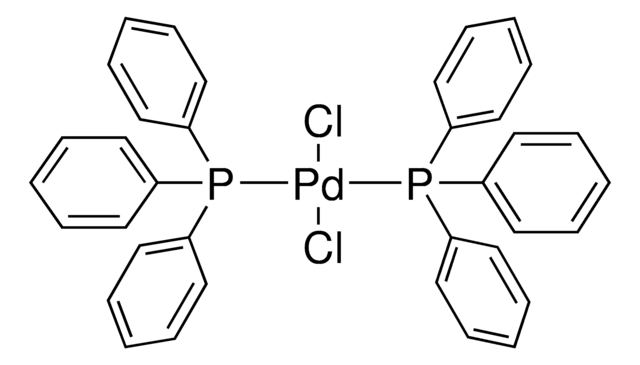

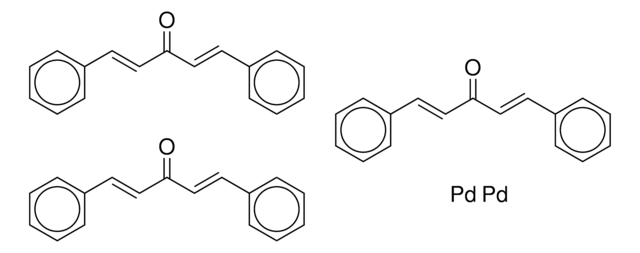
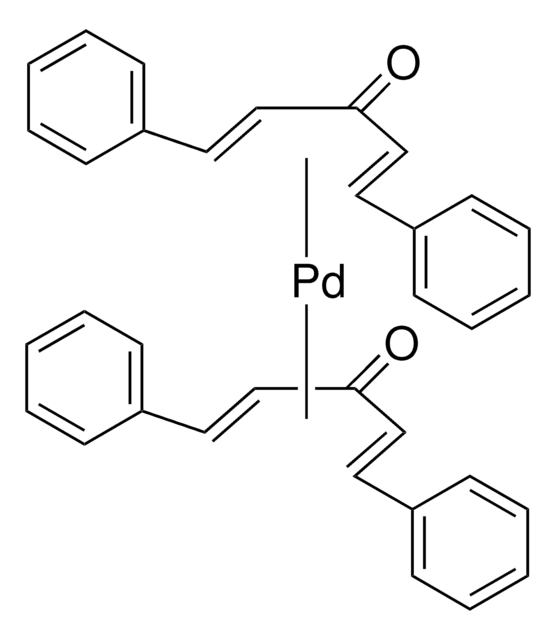
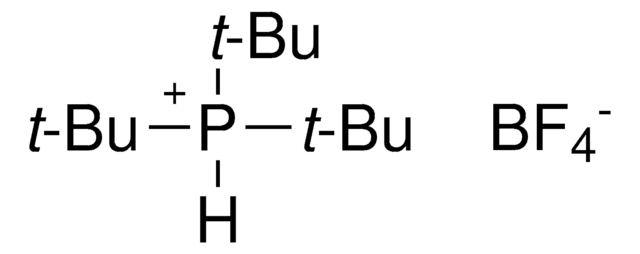
![[1,1′-Bis(diphenylphosphino)ferrocene]dichloropalladium(II)](/deepweb/assets/sigmaaldrich/product/structures/130/734/8846aa26-1858-458a-998d-8c306c13bf0f/640/8846aa26-1858-458a-998d-8c306c13bf0f.png)
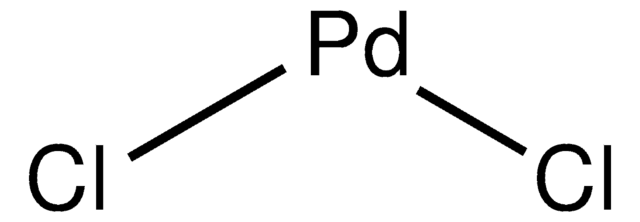
![[Pd(OAc)2]3 reagent grade, 98%](/deepweb/assets/sigmaaldrich/product/structures/508/249/99a0ef2c-b77c-4d73-8ed9-0cca05b6b41f/640/99a0ef2c-b77c-4d73-8ed9-0cca05b6b41f.png)
